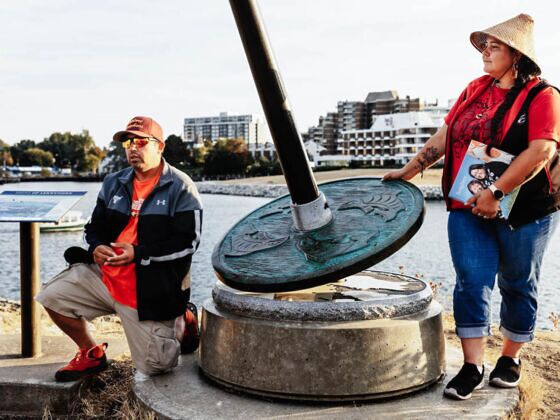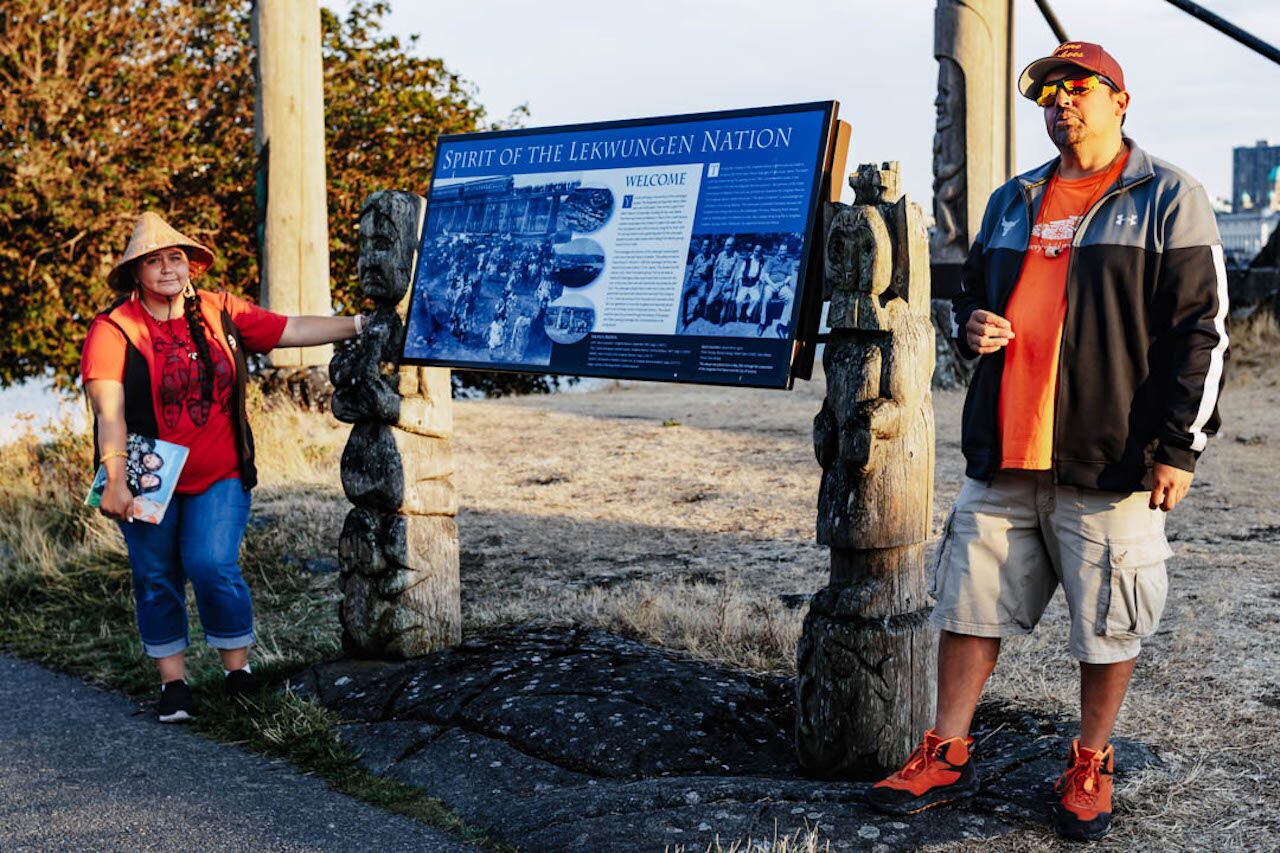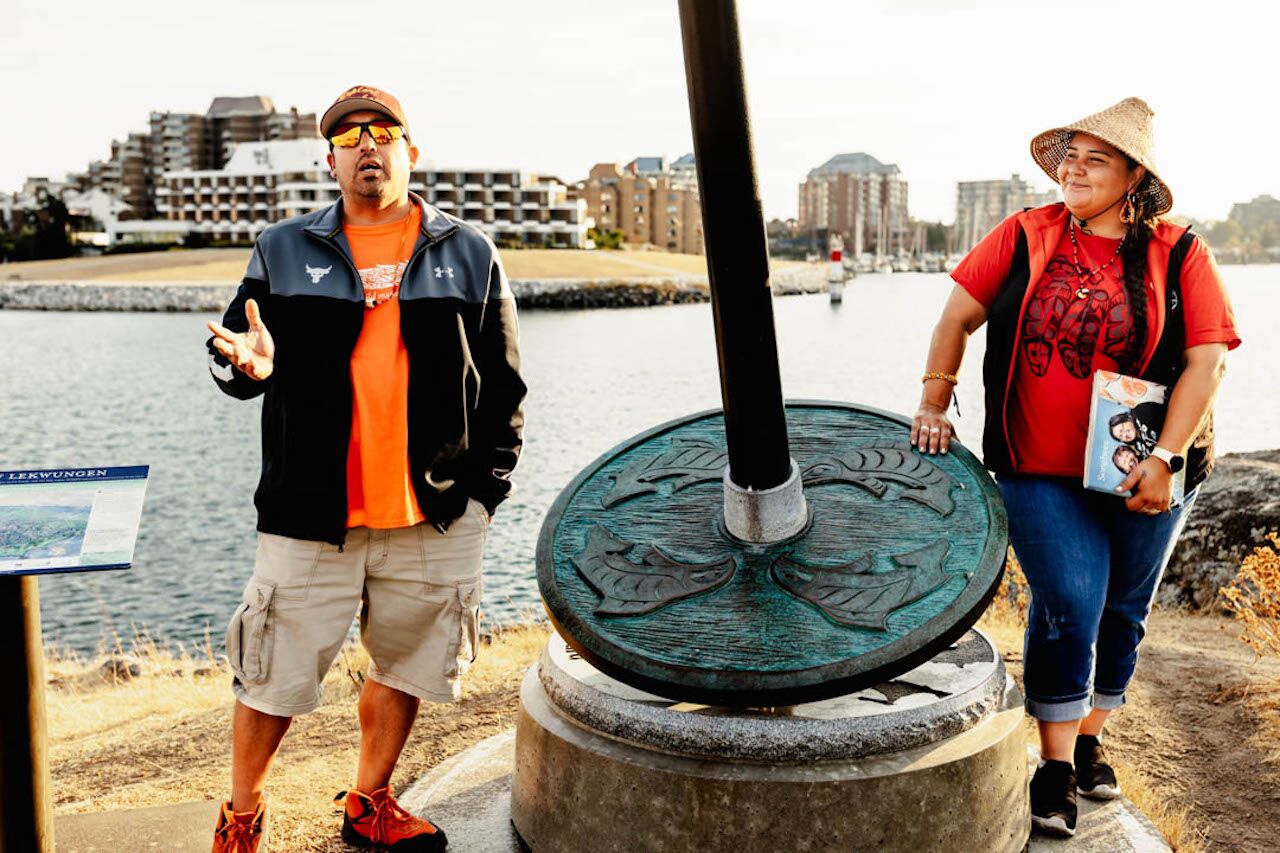Many visitors to Victoria, British Columbia, find themselves meandering along the Inner Harbour. On a recent visit, the area was a fizzy commotion of sound and activity as water taxis whizzed by and a group of boisterous teenagers chattered and laughed. I heard the battery drum of propellors from the seaplanes that use the harbor as an airstrip.
In addition to its modern importance to the region, the Victoria Inner Harbour is also culturally and historically significant to the Lekwungen Nation. The Lekwungen, often called the Songhees, is an Indigenous Coast Salish Nation who live in Greater Victoria. The Songhees and Esquimalt First Nations have hunted and gathered in this waterway for millennia.
One of the better ways for visitors to learn about this connection and history in a way that respects Indigenous communities is by letting people tell their own stories.


